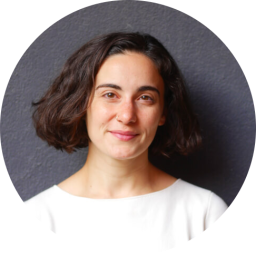Liposculpture
Liposculpture is a liposuction procedure which aims to sculpt the body into a new shape. The procedure is suitable for those who are generally a healthy weight but have some stubborn pockets of fat that cannot be removed through diet and exercise. Liposculpture can also create the appearance of a six pack or create a curvier figure.
The content has been reviewed for quality and accuracy to the best of our knowledge by Qunomedical and its Medical Board of Experts.
 JuliaPatient Manager
JuliaPatient Manager“Qunomedical helped me so much! Thank you!“
“Qunomedical helped me so much! Thank you!“
Liposculpture Quick Details
WHO IS THIS FOR
People who want to alter the shape of their body.
People who have undergone abdominal surgery.
People who have specific areas of fat that they have been unable to get rid of.
TREATMENT DURATION
The surgery usually takes between two and three hours.
RECOVERY TIME
Two to seven days of resting and up to six weeks for full recovery.
SUCCESS
The liposculpture procedure has a very high success rate. Long-lasting results are, however, dependent on you following a healthy diet and exercise regime.
POTENTIAL RISKS & SIDE EFFECTS
Lumpy or rippled skin
Bruising
Damage to nerves, blood vessels, muscles or abdominal organs
Fluid accumulation
Irregular appearance
Normal risks that come with general anaesthetic
ALTERNATIVE TREATMENTS
Before / After Photos
What Is Liposculpture?
Liposculpture is a procedure to remove fat cells and contour the body. Using a laser or liposuction technique, your doctor will work to create the shape you desire. Liposculpture can be used on the abdomen, hips, thighs, face and neck. This procedure is especially useful for use on the fatty tissue deposits that tend to form as we age. Even if you are a healthy weight and regularly exercise, it may not have been possible for you to get rid of fat in some areas. Some doctors may classify Liposculpture differently to others, so it is important to have a consultation to discuss your expectations and learn about the specific technique that the doctor uses. Liposculpture has long-lasting results as the removed fat rarely comes back as long as you maintain a healthy lifestyle.
How Does Liposculpture Work?
At your consultation, you will be examined and the doctor will inform you if you are a suitable candidate for Liposculpture. You can explain what you want from the procedure and the results that you expect. Your doctor will discuss techniques and possible areas of the body that they will work on.
On the day of your surgery you will be given a local or general anaesthetic, depending on how many areas you are having the procedure carried out on.
Your doctor will use your chosen technique to remove fat or move it to another area in order to sculpt your body into its new shape. Between two and six incisions are usually made, depending on the size of the area being treated.
After being monitored in the recovery area, you may have to stay overnight if you had a general anaesthetic.
After you are discharged, you can recover at home for a few days. Follow the doctor's instructions during recovery to see the best results.
Are There Different Types of Liposculpture?
There are two main types of liposculpture, plus a variety of other options that can be discussed with your doctor.
Tumescent Liposculpture: a local anaesthetic and epinephrine (to prevent bleeding) are injected into the fat layer, making it become swollen and firm or tumescent. A small tube, a cannula, is then inserted into tiny incisions, usually just 1-3mm in length, and the fat is removed via a suction technique.
Laser Liposculpture: a cannula with a laser inside it is inserted into the target area to melt the fat away. The liquefied fat can then be drained out through tiny incisions or suctioned away. Heat from the laser causes the body to naturally react and contract the surrounding tissues making the skin tighter and smoother. This less invasive technique also means that you should experience less pain and your recovery time should be shorter.
Other techniques available include using power-assisted devices with an electric motor, involving compressed air or a spinning cannula. A water jet-assisted technique uses a pressurised stream of saline to dislodge and remove the fat cells. In this method the fat cells are more gently removed and not destroyed during the process. Many modern techniques use tiny incisions in the natural folds of the body to minimise scarring. Often the scars from this procedure are unnoticeable.
What Should I Expect?
If local anaesthesia is used during your surgery, you will be awake as it is performed. This is the safest method, however, if you feel uncomfortable with the thought of being awake, discuss this with your doctor during your consultation. Injecting the local anaesthesia under the skin may take some time and, therefore, this method may take longer overall compared to having the procedure done under general anaesthetic. There should not be much blood loss from the procedure, but there will be some bruising and swelling afterwards. The area will be bandaged and compressed to help reduce the swelling.
When micro-incisions are used, you will not require any stitches, and the fluid that was injected during the surgery can drain out through the incisions. Absorptive sponges and compression pads will be applied to contain the drained fluid. If stitches are required for larger incisions, drainage will take longer and there may be more bruising and swelling than normal. Recovery times vary depending on the patient and the area that the procedure was done on. You will be required to wear compression garments after surgery on your abdomen or legs. When you start to feel better you will be able to resume normal daily activities. Strenuous exercise should be avoided for up to a month following surgery.
There is usually only one treatment required, and the fat that was removed should not come back as long as you maintain a healthy lifestyle and weight. You may be able to see some results within just a week, however it can take between three and six months for the body to fully recover. After this time, you will be able to see your final results.

Patient manager
Frieda
Your personal Patient Manager
Let's talk
Still unsure? Feeling overwhelmed? Talking to a real person can give you the guidance and reassurance needed. You don’t have to do it alone. Let’s find the right doctor together.